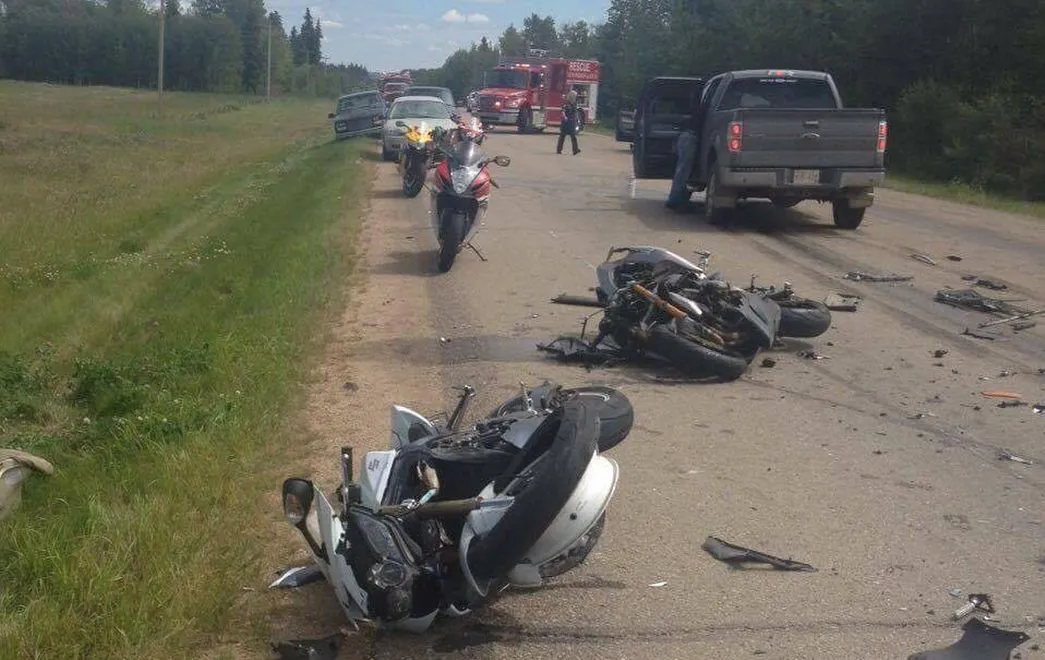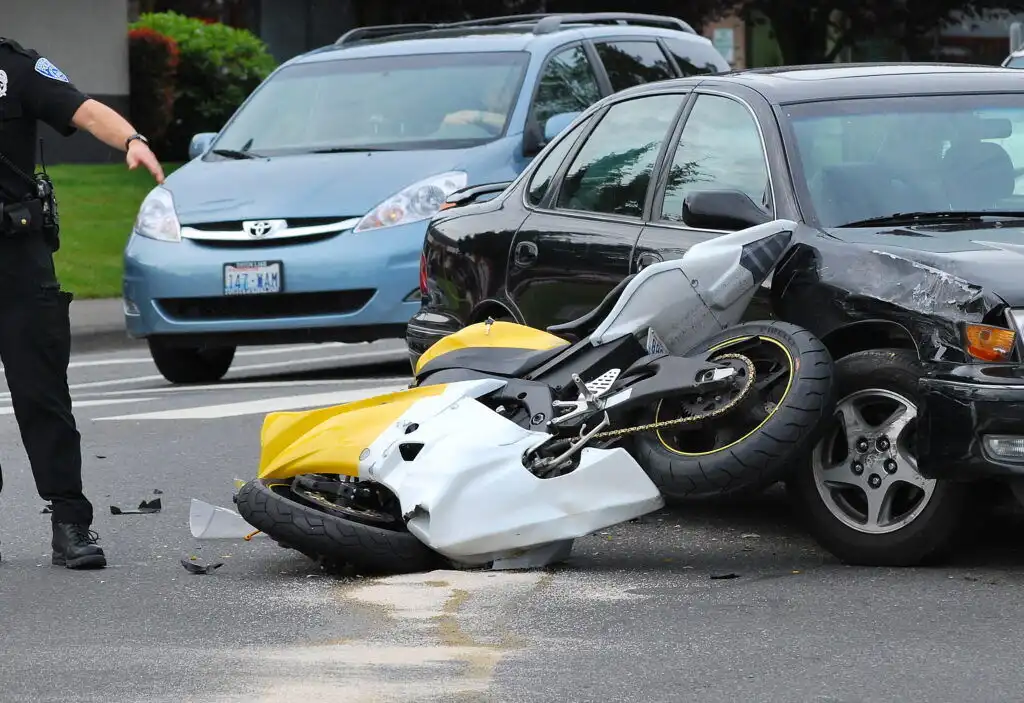Motorcycle accidents are a major concern for riders and motorists alike, and understanding the risk factors can play a significant role in preventing them. With the thrill of riding comes the responsibility to stay informed about the risks involved. According to the National Highway Traffic Safety Administration (NHTSA), motorcyclists are at a significantly higher risk of injury or death in an accident compared to passengers in cars. In this blog, we will explore the most common risk factors contributing to motorcycle accidents, backed by recent statistics, and offer insights into how riders can reduce their chances of being involved in a crash.
1. Speeding: The Leading Cause of Motorcycle Accidents
Speeding is one of the top contributors to motorcycle accidents, significantly increasing the risk of both fatal and non-fatal injuries. The faster a motorcyclist is traveling, the less time they have to react to sudden hazards, such as a vehicle stopping in front of them or an obstacle on the road.
-
Statistics on Speeding and Motorcycle Accidents: According to NHTSA, nearly 30% of all motorcycle fatalities are speed-related. When a rider exceeds the speed limit or travels too fast for road conditions, the likelihood of losing control of the bike increases dramatically.
-
Why Speeding is Dangerous: Unlike cars, motorcycles are less stable at higher speeds, and riders are more vulnerable to losing control. A small slip, bump, or obstacle on the road at high speeds can result in catastrophic consequences. High-speed accidents also tend to cause more severe injuries due to the force of impact.
-
Prevention: To reduce the risk of an accident caused by speeding, always obey speed limits and adjust your speed according to road conditions, weather, and traffic flow.
2. Alcohol and Drugs: Impairment Increases Risk
Alcohol and drugs are responsible for a significant portion of motorcycle accidents. When a rider is under the influence, their reaction time, decision-making ability, and motor skills are impaired, increasing the risk of a crash.
-
Motorcycle Accidents and Impairment: According to NHTSA, in 2020, approximately 25% of motorcyclists involved in fatal crashes had a blood alcohol concentration (BAC) of 0.08% or higher. Alcohol impairs coordination, balance, and judgment, which are all essential when operating a motorcycle.
-
Why Alcohol is Especially Dangerous for Motorcyclists: Unlike cars, motorcycles offer less protection in the event of a crash. When a rider is impaired, they are even more vulnerable to severe injuries or death. Alcohol and drugs also impair a rider’s ability to judge speed, distance, and the behavior of other road users, putting them at greater risk of accidents.
-
Prevention: Never ride under the influence of alcohol or drugs. Always designate a sober rider or use alternative transportation if you plan to drink. Motorcycle riders should also be aware that certain prescription medications can impair their ability to ride safely.
3. Inexperienced Riders: Lack of Experience and Training
Inexperienced riders are more likely to be involved in accidents, as they may not have the skills or knowledge needed to safely operate a motorcycle. According to a study by the Insurance Institute for Highway Safety (IIHS), motorcyclists with less than one year of experience are more likely to crash than those who have been riding for several years.
-
Statistics on Inexperienced Riders: A study by the Motorcycle Safety Foundation found that riders who have taken formal motorcycle safety courses are 30% less likely to be involved in an accident. New riders often underestimate the challenges involved in controlling a motorcycle, especially in emergency situations.
-
Why Inexperience Increases Risk: Inexperienced riders may not know how to handle dangerous road conditions, such as gravel, wet roads, or potholes. They may also struggle with essential riding techniques, such as braking effectively, making quick turns, or avoiding hazards.
-
Prevention: To reduce the risk of an accident, all new riders should take a motorcycle safety course to learn proper techniques and gain valuable experience in controlled environments. Additionally, practice in low-traffic areas until you feel comfortable riding in various conditions.
4. Weather Conditions: The Role of Rain, Fog, and Wind
Weather conditions can significantly impact the safety of motorcycle riders. Wet roads, fog, and strong winds can reduce visibility and traction, making it more difficult for riders to maintain control of their bikes.
-
Weather-Related Motorcycle Accidents: Wet or slippery roads account for a significant number of motorcycle accidents. In 2020, approximately 16% of motorcycle accidents occurred in rainy conditions, according to NHTSA. Fog and poor visibility also increase the likelihood of accidents, as riders may not see other vehicles or road hazards in time.
-
Why Weather Is a Factor for Motorcyclists: Unlike cars, motorcycles are more affected by weather conditions, especially when it comes to traction. Wet or icy roads can cause tires to slip, and strong winds can make it harder for riders to stay on course. Poor visibility in fog or rain can also make it difficult for riders to see hazards or other vehicles on the road.
-
Prevention: To avoid weather-related accidents, riders should slow down in rainy or foggy conditions and avoid riding in extreme weather when possible. If riding in the rain is unavoidable, be sure to wear waterproof gear and reduce your speed. Always ensure your motorcycle’s tires have adequate tread for wet conditions.
5. Lane Splitting and Other Risky Riding Behaviors
Lane splitting, or riding between two lanes of traffic, is another risky behavior that can lead to accidents. While lane splitting is legal in some states, it remains controversial and dangerous if not done carefully. Riders who engage in lane splitting may be at greater risk of accidents with other vehicles, especially if drivers aren’t expecting them to be in that space.
-
Statistics on Lane Splitting: According to a study by the University of California, nearly 50% of motorcyclists involved in lane-splitting crashes were found to be in a collision with a car changing lanes or merging. Lane splitting can be especially risky when traffic is moving at high speeds or when riders are not paying close attention to the surrounding vehicles.
-
Why Lane Splitting Increases Risk: When lane splitting, riders are in close proximity to other vehicles and may not have enough time to react if a driver suddenly changes lanes or stops. Additionally, lane-splitting riders are often less visible to drivers, who may not see them in their rearview mirrors.
-
Prevention: Riders should avoid lane splitting in heavy traffic or at high speeds. Always be cautious when riding between vehicles, and make sure other drivers have seen you before you attempt to pass.
6. Other Drivers: The Impact of Negligence and Distracted Driving
While motorcyclists are often at fault in accidents, other drivers’ negligence or distractions are also major contributors to motorcycle crashes. Many car drivers fail to notice motorcyclists on the road, especially in busy traffic or at intersections.
-
Statistics on Driver-Related Motorcycle Accidents: According to the NHTSA, in 2020, nearly 40% of all motorcycle crashes involved another vehicle. In many cases, the driver of the other vehicle was at fault for failing to yield or failing to notice the motorcyclist.
-
Why Other Drivers Pose a Risk: Cars have larger blind spots than motorcycles, which can cause drivers to miss seeing a motorcyclist. Additionally, distracted driving—such as texting, talking on the phone, or eating—can make it difficult for drivers to notice motorcyclists in time.
-
Prevention: Riders should always stay visible to other drivers by wearing bright or reflective gear and using their headlights during the day. Motorcyclists should also be cautious when approaching intersections and never assume that a driver will yield the right-of-way.
Conclusion
Motorcycle accidents are a serious concern, but understanding the key risk factors can help riders take proactive steps to stay safe. By adhering to safe riding practices, avoiding alcohol and drugs, wearing proper safety gear, and being aware of road conditions and other drivers, motorcyclists can reduce their risk of being involved in a crash. Remember, knowledge and caution are your best defenses on the road.
If you’ve been involved in a motorcycle accident, understanding the contributing factors and consulting with a personal injury lawyer can help you recover the compensation you deserve. Stay safe, ride responsibly, and always be mindful of the risks.


